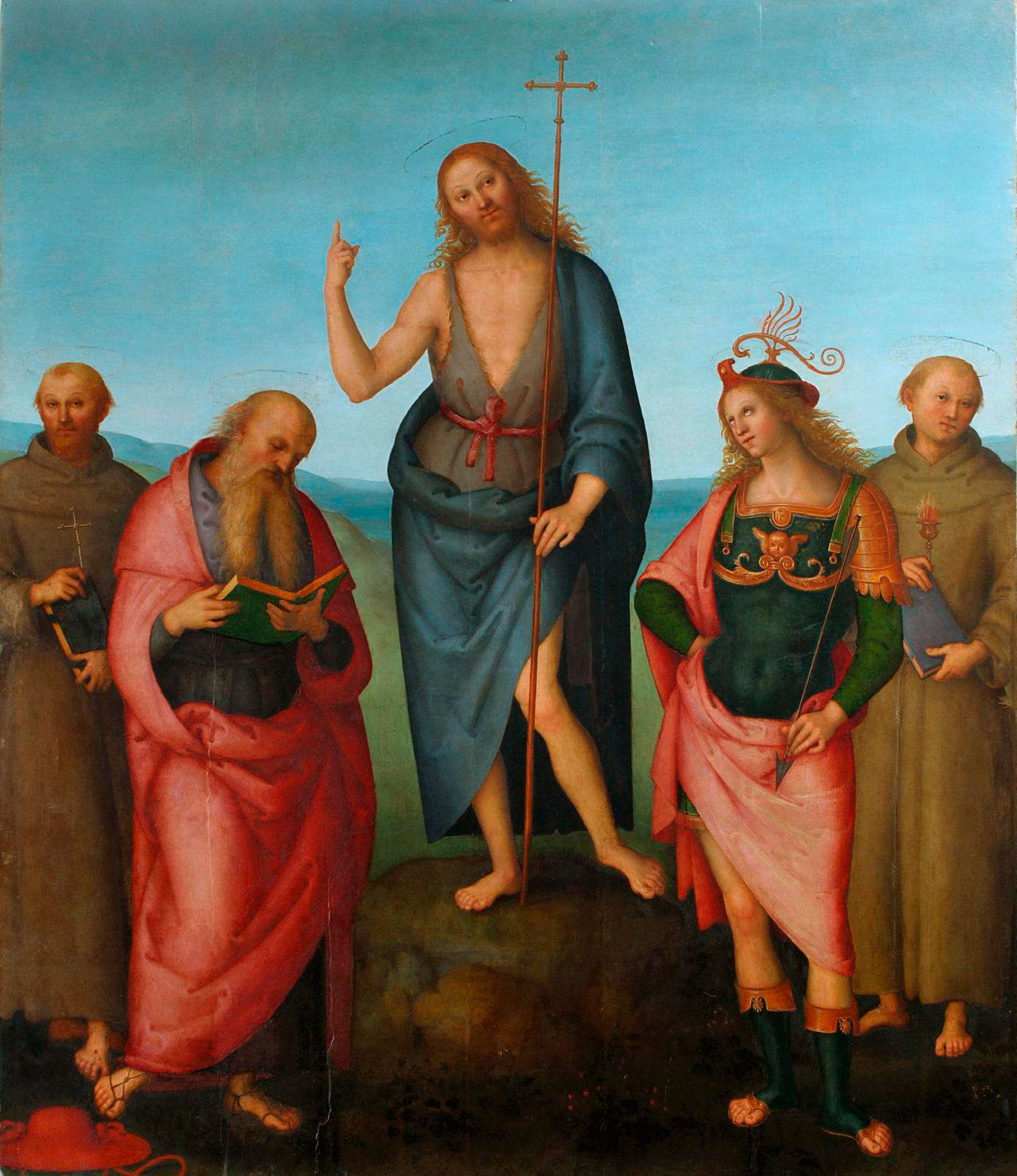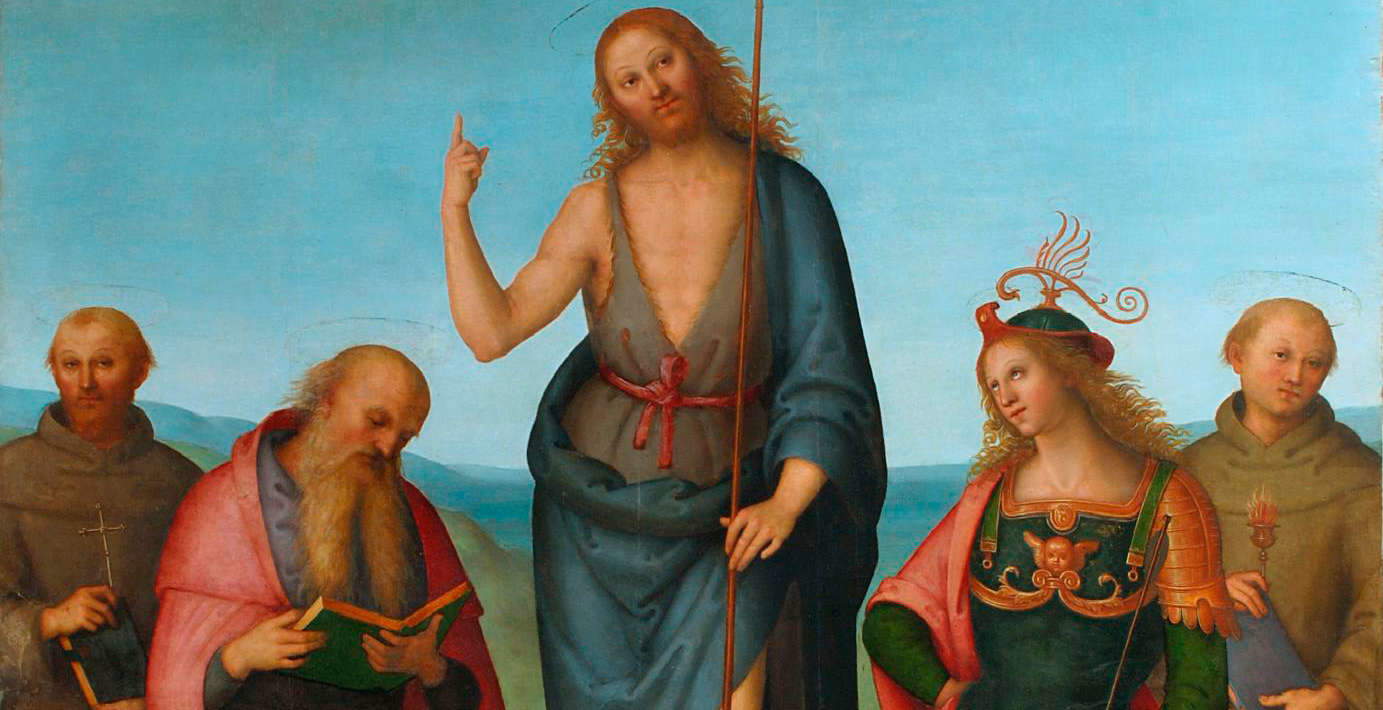After Caravaggio at Vinitaly, the Herculaneum Runners at a fashion show and the Farnese Atlas at the Osaka Expo, the list of testimonial works of art is lengthening: in fact, the Ministry of Culture has announced that it will lend a work attributed to Perugino kept at the National Gallery of Umbria to the Rimini Meeting of Communion and Liberation. The work, St. John the Baptist between Saints Francis of Assisi, Jerome, Sebastian and Anthony of Padua, renamed in recent months the “Altarpiece of the Five Saints,” given to Perugino although a relevant part of the critics consider it to have been executed with the vast concurrence of the workshop, will in fact decorate, from August 22 to 27, the institutional space of the Ministry of Culture. A painting that is far from compelling (with the National Gallery’s 2022 refurbishment, the work was not included in the itinerary), so much so that the master’s hand tends to be recognized mainly in the central figure and in that of St. Jerome, and a work that repeats patterns very common in Perugino’s workshop at the end of his career (one tends to date it to the early 1910s), it has nonetheless experienced a certain critical fortune especially in the nineteenth century. Elvio Lunghi, in 2004, hypothesized its provenance from the chapel of San Giovanni delle Scale in the Perugian church of San Francesco al Prato: it was probably made for the Signorelli family, which held the juspatronage of the chapel, and the commissioner must have been Mrs. Andreana Signorelli, wife of Francesco Graziani (in memory of her husband, the lady had also had Perugino paint the Transfiguration , which was formerly in the church of Santa Maria dei Servi). The figures are modeled on those in the frescoes of the Collegio del Cambio.
This is a work that, in recent times, has been touring a lot: at the beginning of 2023, in fact, it was at the Pinacoteca Nazionale in Bologna on the occasion of the renewed display on the Renaissance section of the Bologna museum, after which, between the end of 2024 and the beginning of 2025, it went to the Palazzo della Minerva in Rome for an exhibition dedicated to Saint Francis on the occasion of the Jubilee. Now, then, the new move within a short time. The loan project was proposed by the Department for General Administration (DIAG) of the MiC and was shared by the Department of Cultural Activities (DIAC): it was the latter that asked the Directorate General for Museums for the availability of the work kept at the National Gallery of Umbria in order to display it in the institutional stand. The Umbrian museum granted permission for the loan. The display will cost 10,230 euros.
The choice, the ministry points out, was not made at random: in the figure of St. John the Baptist they wanted to see a presence capable of dialoguing directly with the theme of the 2025 edition of the Meeting (“In deserted places we will build with new bricks,” a quote from T. S. Eliot), while the fact that the panel also depicts St. Francis ties in with the path of Franciscan celebrations that will culminate in 2026, on the occasion of the eighth centenary of the death of the Saint of Assisi. “The presence of St. John the Baptist - a figure of threshold and rebirth - recalls the theme of the Meeting,” reads a note from the Roman College, “while the depiction of St. Francis is intertwined with the ministry’s commitment to the Franciscan celebrations, which will culminate in 2026 with the eighth centenary of the death of St. Francis of Assisi. Chosen as a symbol of rebirth and dialogue, the altarpiece embodies the profound link between art, beauty and hope. An invitation to find, through the sacred and culture, the strength to build a new vision of the human.”
The institutional space of the Ministry of Culture is curated by the Department of Cultural Activities (DiAC), through Service VI - Events, Exhibitions and Demonstrations. The exhibition of the altarpiece is realized in collaboration with the National Museums of Perugia - Regional Directorate National Museums Umbria.
 |
| A work attributed to Perugino lent for Communion and Liberation meeting |
Warning: the translation into English of the original Italian article was created using automatic tools. We undertake to review all articles, but we do not guarantee the total absence of inaccuracies in the translation due to the program. You can find the original by clicking on the ITA button. If you find any mistake,please contact us.